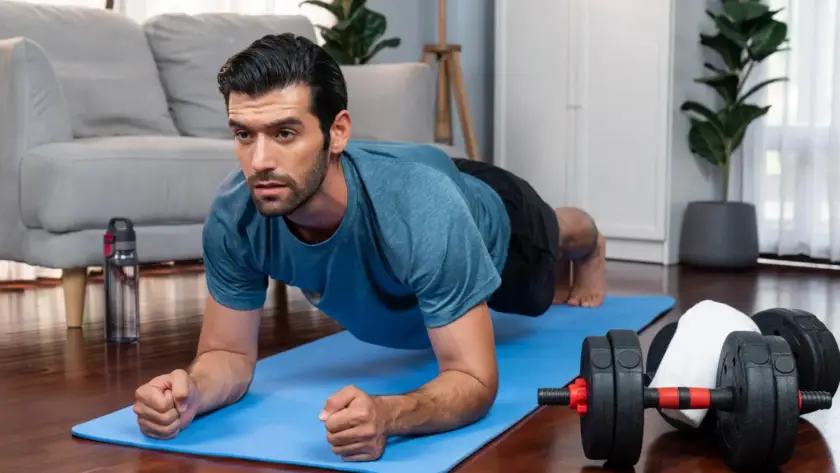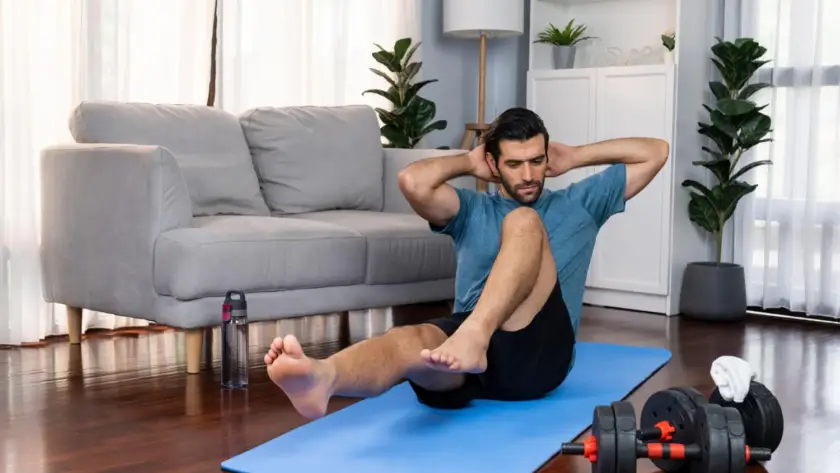If you’ve ever wished for a workout that burns maximum calories in minimal time, HIIT workouts for weight loss might be your ultimate fitness solution.
High-Intensity Interval Training (HIIT) is not just a trend it’s a scientifically proven, time efficient way to burn fat, build endurance, and transform your body.
Unlike traditional workouts, HIIT alternates between intense bursts of exercise and short rest periods. Whether you’re a busy professional, student, or parent, you can fit quick HIIT workouts into your daily schedule even in just 15 minutes.
In this guide, we’ll explore what makes HIIT so powerful, how it helps you burn fat fast, and provide real-life examples and a full home HIIT workout plan you can start today.
What is HIIT (High-Intensity Interval Training)?
HIIT (High-Intensity Interval Training) combines short, high effort exercises with brief recovery breaks. For instance, you might sprint for 30 seconds, then walk for 15 seconds, and repeat.
This approach keeps your heart rate elevated, pushing your body to burn more calories even after your workout ends (thanks to the afterburn effect, or EPOC Excess Post Exercise Oxygen Consumption).
💡 In simple words: You keep burning calories for hours, even while resting!
For beginners, start slow. You can modify movements or reduce intensity as needed. Check out this Beginner HIIT Workout Plan to start safely.
How HIIT Works for Weight Loss
The secret behind HIIT workouts for weight loss lies in how it affects your metabolism and fat-burning process.
1. The Afterburn Effect (EPOC)
After an intense HIIT session, your body works harder to recover oxygen levels, resulting in continued calorie burn for up to 24 hours post-workout.
2. Boosts Fat Metabolism
HIIT triggers the body to use fat as fuel, promoting high intensity interval training fat loss without sacrificing muscle mass.
3. Improves Insulin Sensitivity
Studies show HIIT helps regulate blood sugar and improves energy efficiency ideal for people aiming to burn belly fat and maintain steady energy levels.

Benefits of HIIT Workouts
HIIT isn’t just efficient it’s powerful. Here are some science-backed benefits:
-
Burns Fat Quickly: HIIT can burn up to 30% more calories than traditional cardio.
-
Boosts Metabolism: Your metabolic rate stays high long after the workout.
-
Improves Cardiovascular Health: Enhances heart and lung function.
-
Saves Time: Even a 15 minute HIIT session delivers big results.
-
No Equipment Needed: Perfect for bodyweight HIIT workouts at home.
💬 Real-world tip: If you enjoy early workouts, pair your HIIT with a light breakfast like these High-Protein Breakfast Ideas to maximize fat burn and energy.
Beginner-Friendly HIIT Workouts for Weight Loss
You don’t need a gym or fancy machines to start. Try these best HIIT exercises at home:
-
Jump Squats – Builds power and tones legs.
-
High Knees – Boosts heart rate fast.
-
Burpees – Full-body calorie burner.
-
Mountain Climbers – Engages core and improves agility.
-
Jumping Lunges – Strengthens legs and burns calories.
Sample 15-Minute HIIT Workout Plan (No Equipment)
Here’s a home HIIT workout plan to get you started:
Warm-Up (3 Minutes)
-
Jumping jacks – 1 min
-
Arm circles – 1 min
-
Standing twists – 1 min
Main Circuit (Repeat 3×)
Each exercise for 40 seconds, rest 20 seconds between moves:
-
Jump squats
-
Burpees
-
Mountain climbers
-
High knees
-
Plank hold
Cool Down (5 Minutes)
-
Gentle stretching
-
Deep breathing exercises
-
Slow walking
👉 If you’re a beginner, start with one or two rounds and gradually increase intensity.

How Often Should You Do HIIT for Weight Loss?
Consistency matters more than duration.
For best results, perform 3 to 4 HIIT sessions per week, leaving rest or light recovery days in between.
According to Healthline, regular HIIT workouts can significantly boost fat burning, improve metabolism, and enhance cardiovascular health when done consistently with proper recovery time.
Overdoing HIIT can lead to fatigue or burnout. Balance it with strength training or a Morning Exercise Routine for Energy and Focus for well rounded fitness.
Nutrition Tips for Maximum Results
Nutrition fuels your HIIT success. Here’s how to optimize it:
-
Before HIIT: Have a light snack (banana, oats, or smoothie).
-
After HIIT: Replenish with protein-rich meals for recovery.
-
Hydration: Drink water before, during, and after your workout.
You can also explore these Iron-Rich Foods to Boost Energy to enhance performance naturally.
Common Mistakes to Avoid
Even experienced exercisers make these errors:
-
Skipping warm-ups or cool-downs.
-
Overtraining without recovery days.
-
Performing movements with poor form.
-
Ignoring nutrition and sleep.
Avoid these mistakes to ensure effective HIIT training for weight loss without injury.
Real-Life Story (Experience)
“When I started doing 10-minute HIIT sessions 4 times a week, I was skeptical. But within a month, I lost 3kg, slept better, and had more energy.
Now, I combine short intense workouts with healthy meals — it fits perfectly into my busy schedule!”
This real-life transformation shows that even small, consistent efforts can bring big changes — especially when you fuel your body right and stay consistent.
Conclusion
HIIT workouts for weight loss prove that fitness doesn’t need hours in the gym.
With short bursts of effort, proper recovery, and smart nutrition, you can burn fat, build strength, and boost energy all in minutes a day.
Whether you’re doing a home HIIT workout plan, a 15-minute HIIT, or just starting your fitness journey, remember:
👉 Consistency beats perfection.
For more motivation, explore our latest articles on Health and Fitness Care and make 2025 your strongest, healthiest year yet!
FAQs: HIIT Workouts for Weight Loss
1. Are HIIT workouts effective for weight loss?
Yes! HIIT workouts for weight loss burn more calories in less time and boost your metabolism, making them one of the fastest fat-loss methods.
2. How long should a HIIT workout last?
A 15-minute HIIT session is enough for most beginners. The key is intensity, not duration.
3. Can I do HIIT workouts every day?
It’s best to limit HIIT to 3–4 times per week to allow recovery. Overtraining may reduce performance.
4. Do I need equipment for HIIT workouts?
Not at all! Try HIIT exercises without equipment like burpees, squats, and high knees for amazing results at home.
5. Is HIIT good for beginners?
Yes — start with HIIT for beginners at home, focus on form, and gradually increase your intensity.



